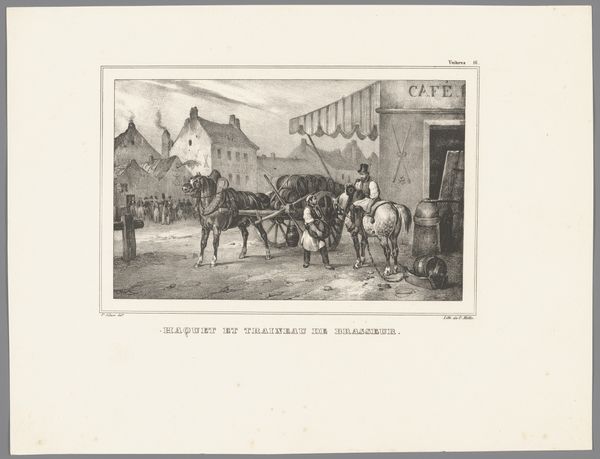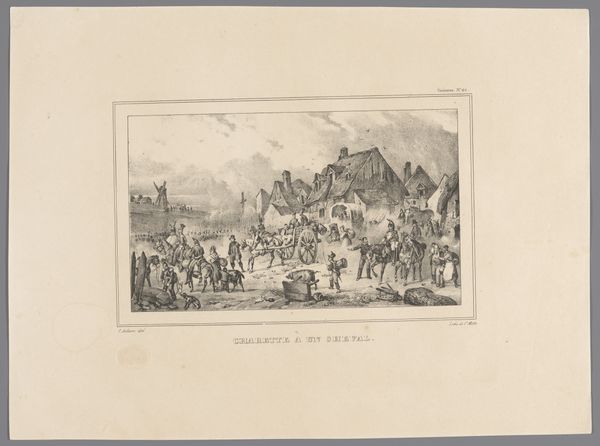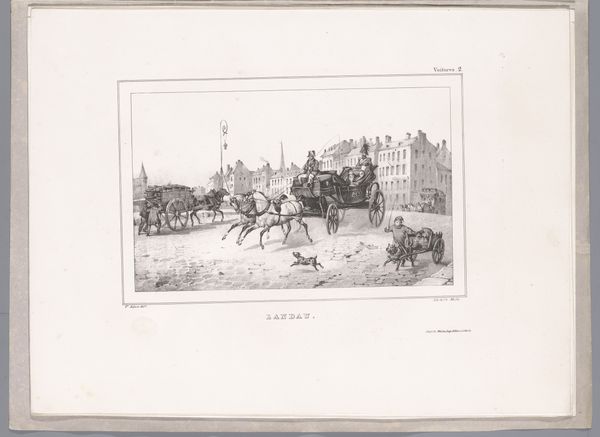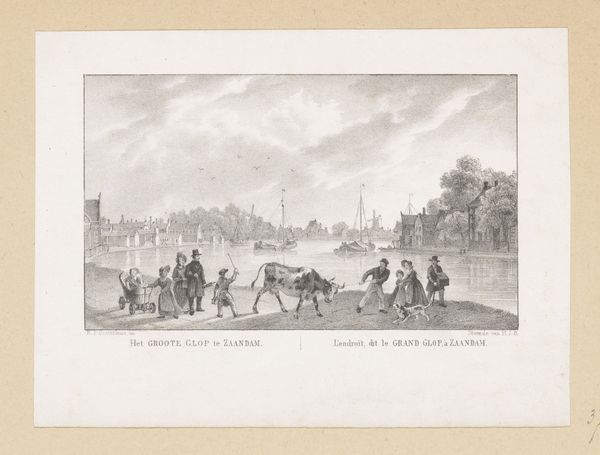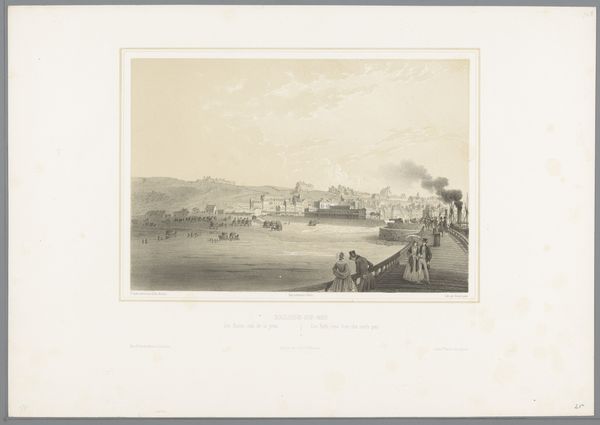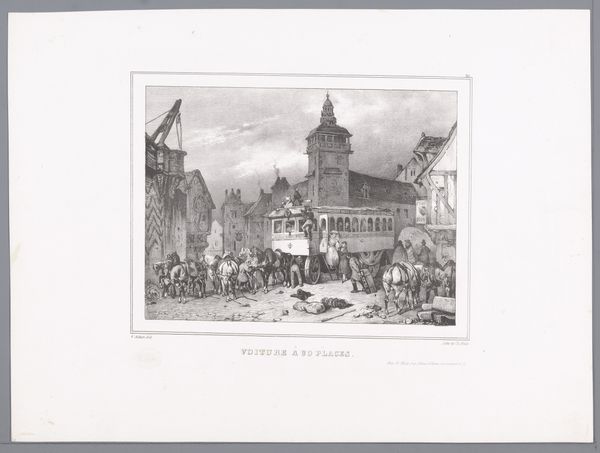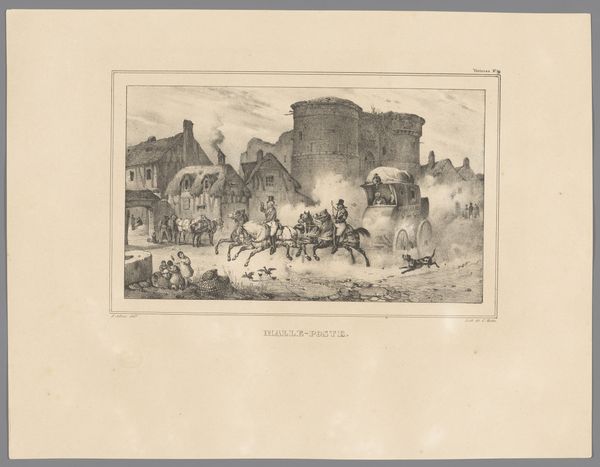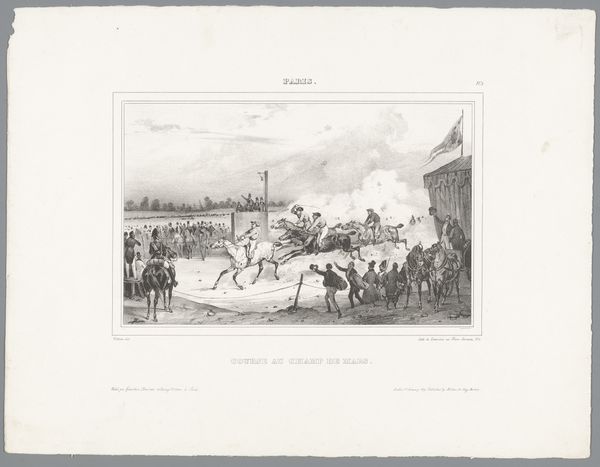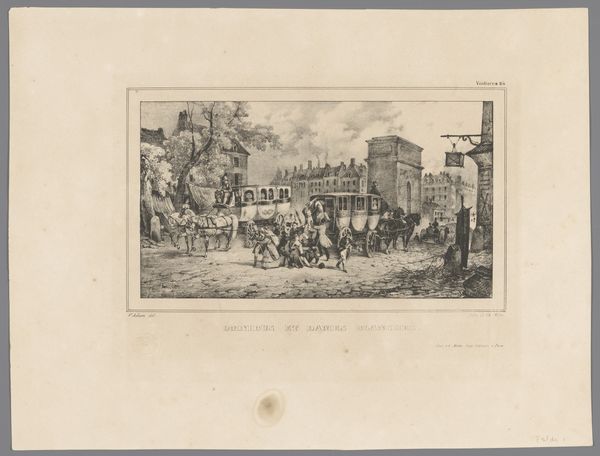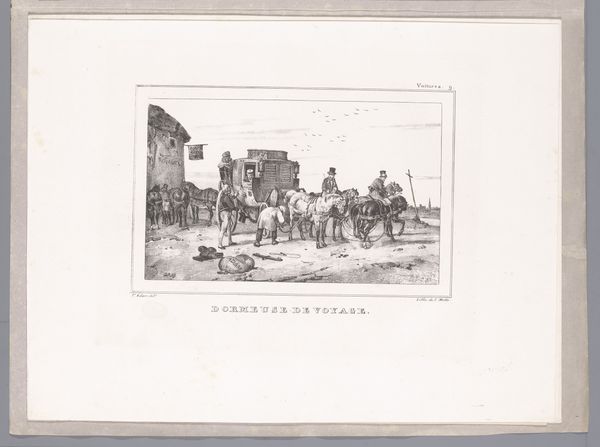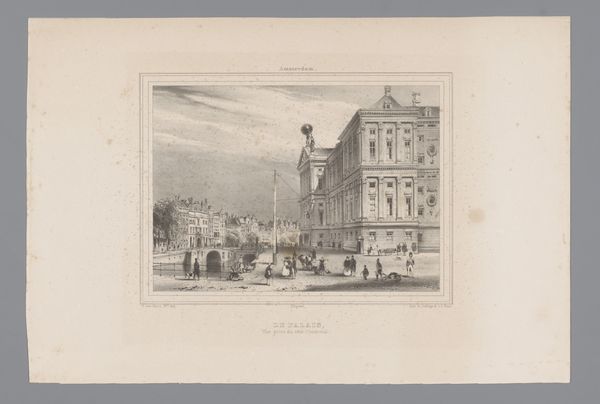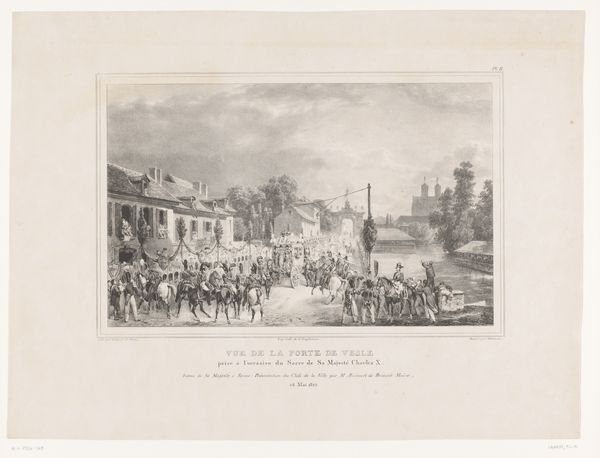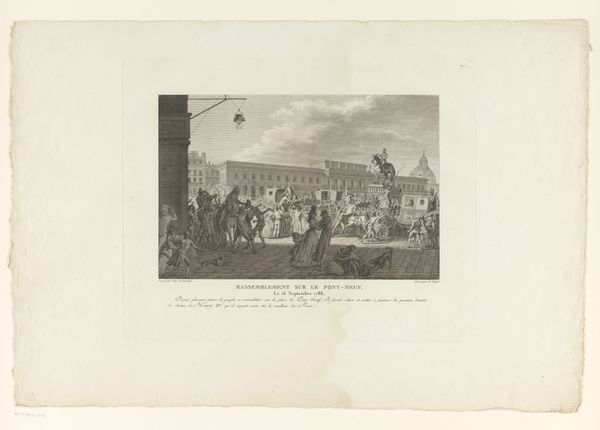
print, engraving
# print
#
old engraving style
#
romanticism
#
cityscape
#
genre-painting
#
engraving
Dimensions: height 255 mm, width 341 mm
Copyright: Rijks Museum: Open Domain
Editor: This engraving by Victor Adam, titled "Engels rijtuig onderweg van Calais naar Boulogne" from 1828, really captures a bustling street scene. The details in the figures and the carriage are incredible, but there's almost a sense of melancholy to it despite the activity. How do you interpret this work? Curator: The imagery here is rich with encoded meaning. The carriage itself, an "Engels rijtuig" or English carriage, signals not just transportation, but also a specific cultural presence in France at the time. The presence of such an object is also about *access*, the movement of people with means. Editor: So, the carriage isn't just a carriage? Curator: Precisely. Consider the Romantic era in which this was created. There was a great interest in folklore, the exotic, and the picturesque. But equally it represented power. Consider who might travel that way. How they're seen on the streets, in that city, in that time. This relates to trade, exchange of ideas, too. Note the almost stage-like setting; figures gazing down from the architecture surrounding them. Does this reinforce a separation? Editor: It does seem to create a strong division, between the travellers and the townsfolk. It seems that the figures watching are like people watching a play. I hadn't considered that. Curator: The city becomes a theatre. And who are the players? These carriages may be fleeting in this moment in time but they and those riding in them became symbolic to the place of social changes afoot. Editor: That’s given me a lot to consider. Thanks! Curator: My pleasure! I'm always fascinated by how much information is embedded in seemingly simple images.
Comments
No comments
Be the first to comment and join the conversation on the ultimate creative platform.
